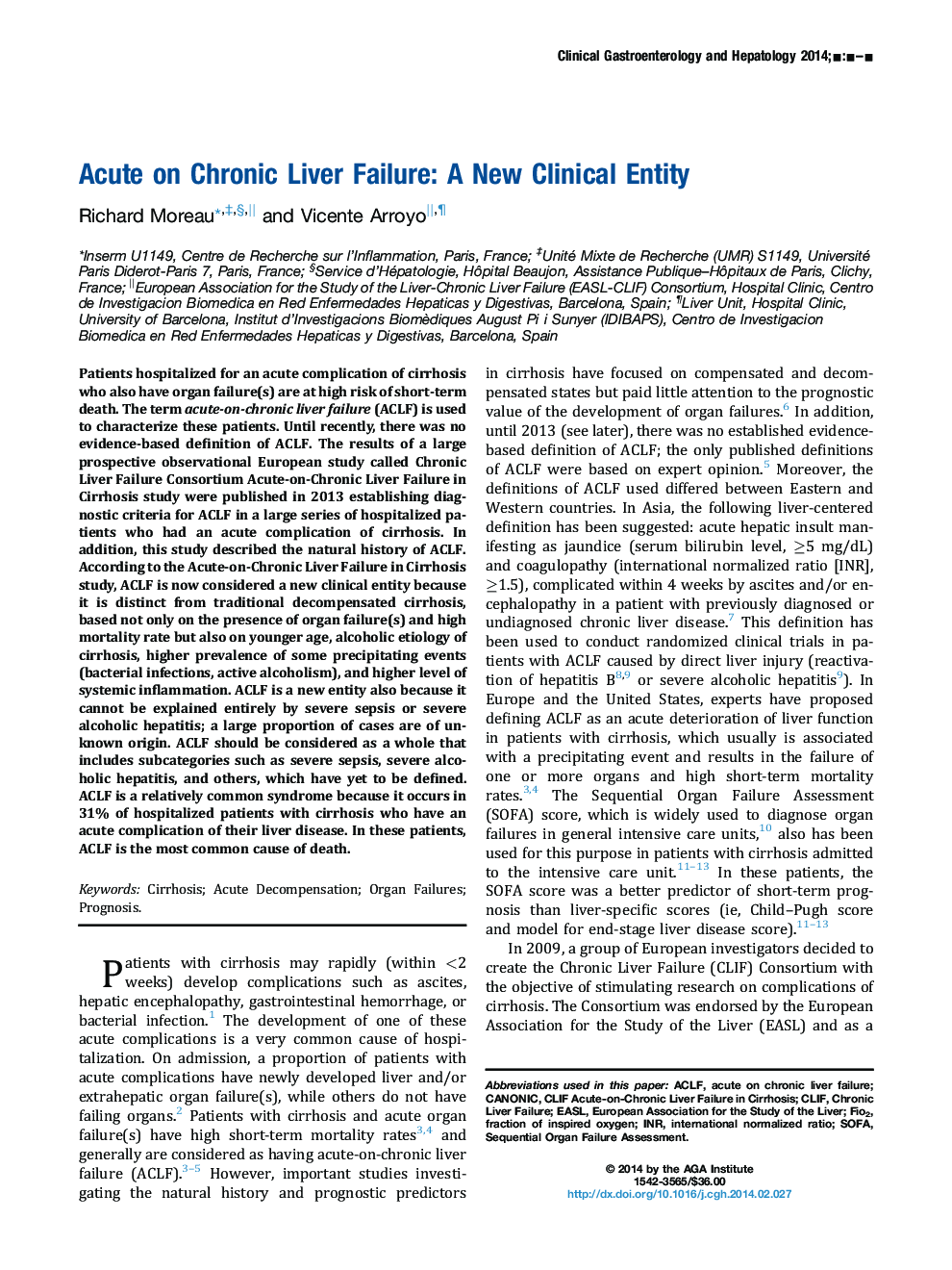| Article ID | Journal | Published Year | Pages | File Type |
|---|---|---|---|---|
| 6091265 | Clinical Gastroenterology and Hepatology | 2015 | 6 Pages |
Abstract
Patients hospitalized for an acute complication of cirrhosis who also have organ failure(s) are at high risk of short-term death. The term acute-on-chronic liver failure (ACLF) is used to characterize these patients. Until recently, there was no evidence-based definition of ACLF. The results of a large prospective observational European study called Chronic Liver Failure Consortium Acute-on-Chronic Liver Failure in Cirrhosis study were published in 2013 establishing diagnostic criteria for ACLF in a large series of hospitalized patients who had an acute complication of cirrhosis. In addition, this study described the natural history of ACLF. According to the Acute-on-Chronic Liver Failure in Cirrhosis study, ACLF is now considered a new clinical entity because it is distinct from traditional decompensated cirrhosis, based not only on the presence of organ failure(s) and high mortality rate but also on younger age, alcoholic etiology of cirrhosis, higher prevalence of some precipitating events (bacterial infections, active alcoholism), and higher level of systemic inflammation. ACLF is a new entity also because it cannot be explained entirely by severe sepsis or severe alcoholic hepatitis; a large proportion of cases are of unknown origin. ACLF should be considered as a whole that includes subcategories such as severe sepsis, severe alcoholic hepatitis, and others, which have yet to be defined. ACLF is a relatively common syndrome because it occurs in 31% of hospitalized patients with cirrhosis who have an acute complication of their liver disease. In these patients, ACLF is the most common cause of death.
Keywords
Related Topics
Health Sciences
Medicine and Dentistry
Gastroenterology
Authors
Richard Moreau, Vicente Arroyo,
